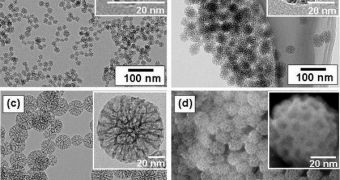Magnetic nanoparticles (mNPs) have been heavily researched for the past ten years, and serious advancements have been made during this time. Studies have resulted in these structures being made capable to carry white blood cells, deadly agents to counteract infections or tumors at specific locations in the body. Other investigations have allowed for the particles to be used as agents acting directly on nerve fibers, which induces nerve-led behavior, such as the autonomous thumping of the heart in a patient with an otherwise fatal condition.
But these amazing achievements are not enough for researchers. They want to go even farther, and imagine a future in which multi-functional mNPs are used for varied tasks at the same time. For instance, a tool that would detect, diagnose, monitor, and treat anything it finds wrong in the body would mean a huge advancement in the field of medicine, almost as great as penicillin, or the discovery of the double-helix structure of DNA.
The nanoparticles could be used, in such a scenario, against a wide range of common medical conditions and allergies, experts believe, and the technology is not that complex to research and implement. The main advantage of the new system would be that it would work inside a living system. An external magnetic field would guide the particles through the body. As soon as some ominous chemicals would be discovered, substances locked inside the small structures would be released, and act locally on the pathogens. This could all be made on the run, and such a capability is not to be lightly dismissed.
A number of review articles on the issue were recently published in the Journal of Physics D: Applied Physics. The selection, entitled “Progress in Applications of Magnetic Nanoparticles in Biomedicine,” featured numerous contributions from various research teams, each of them detailing their methods, as well as the possible options and how to combine their small devices together.
Dr. Catherine Berry, an expert at the Glasgow, UK-based Center for Cell Engineering, and one of the authors of a review paper, says that, “One of the main forerunners in the development of multi-functional particles for theranostic [molecules] is magnetic nanoparticles. Following recent advances in nanotechnology, the composition, size, morphology and surface chemistry of particles can all be tailored which, in combination with their magnetic nanoscale phenomena, makes them highly desirable.”

 14 DAY TRIAL //
14 DAY TRIAL //